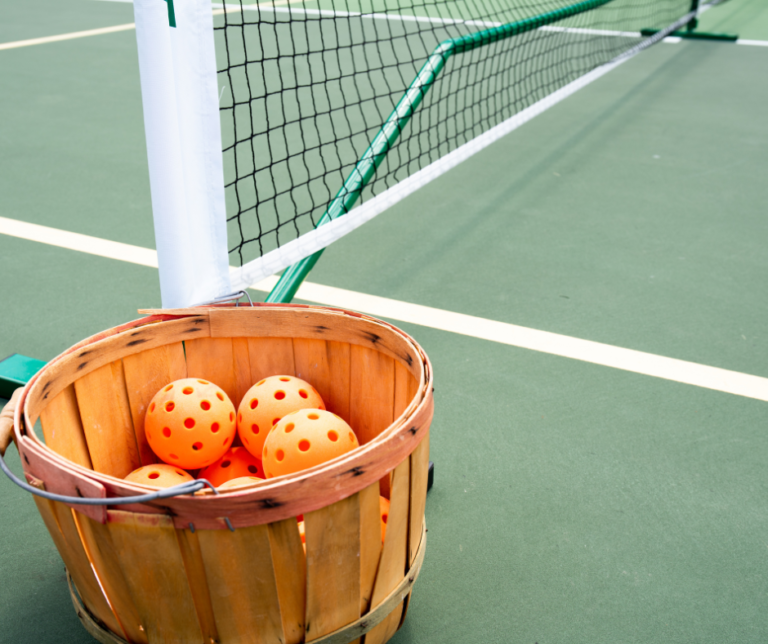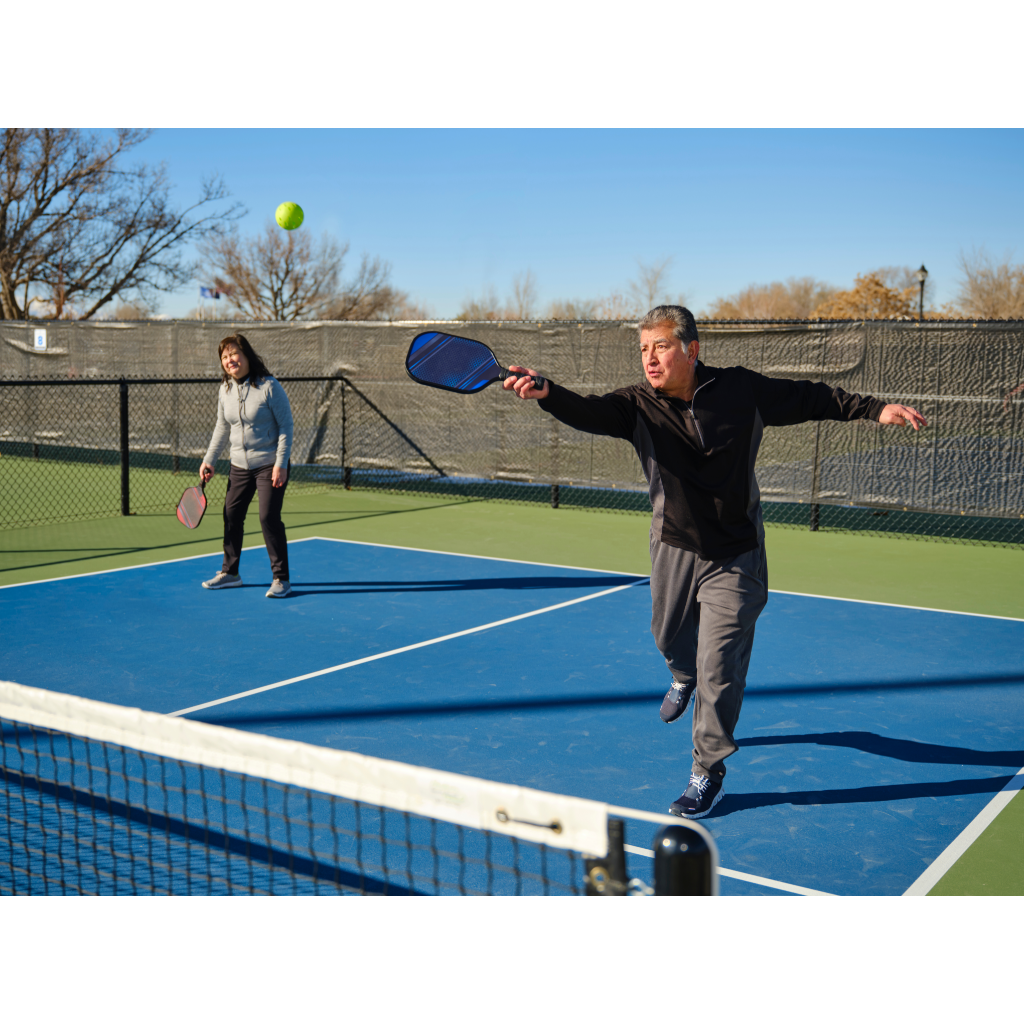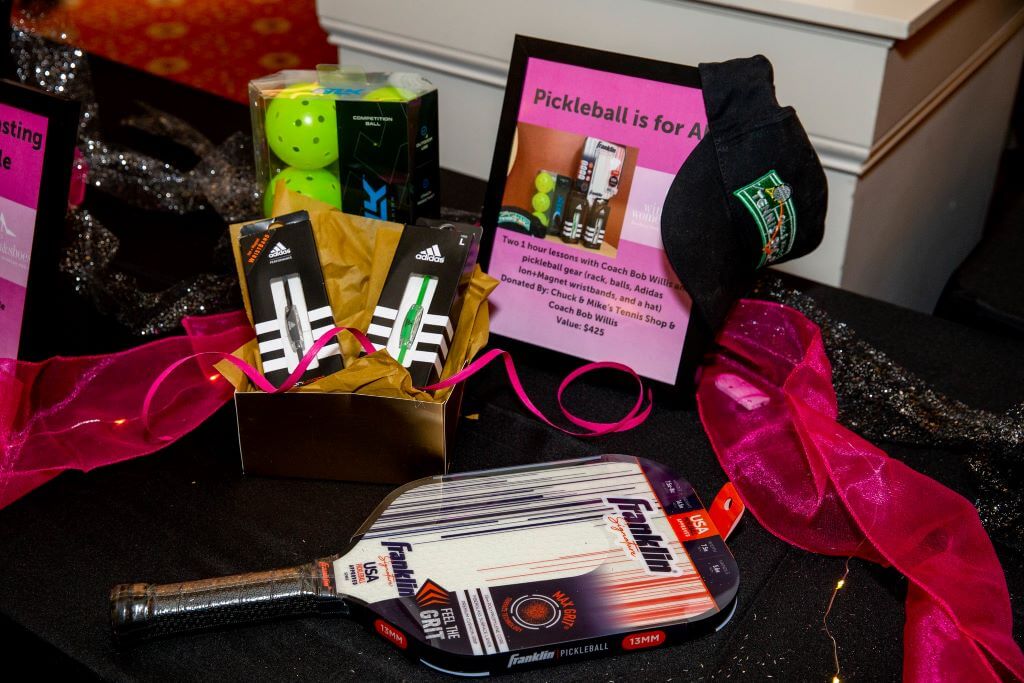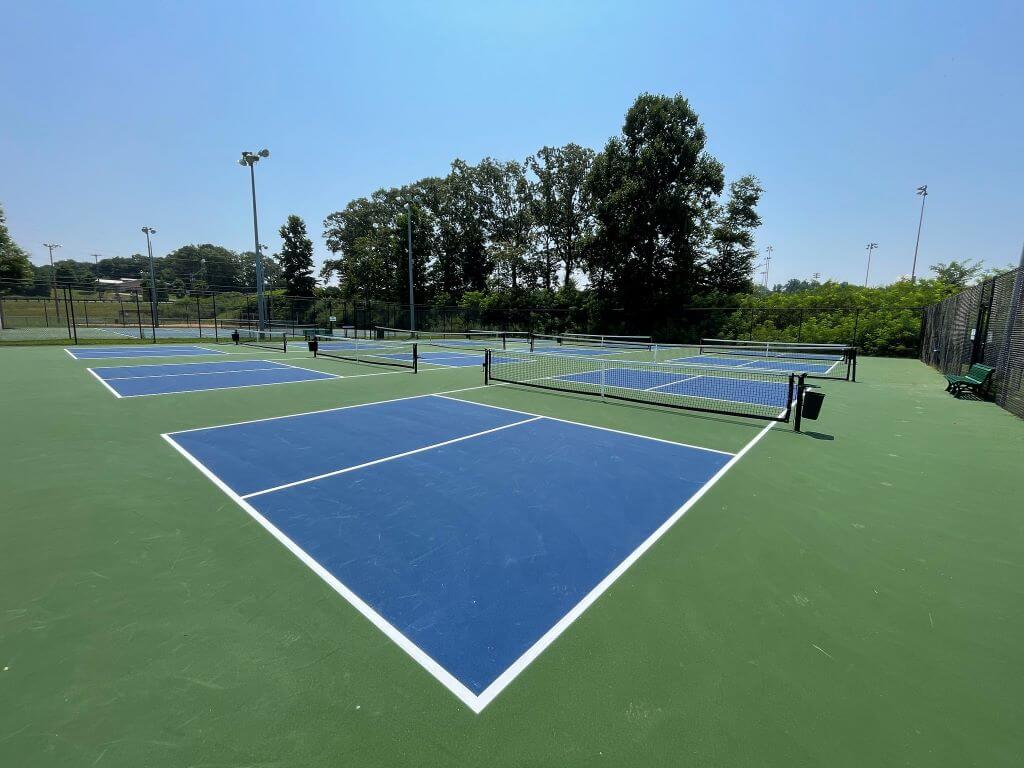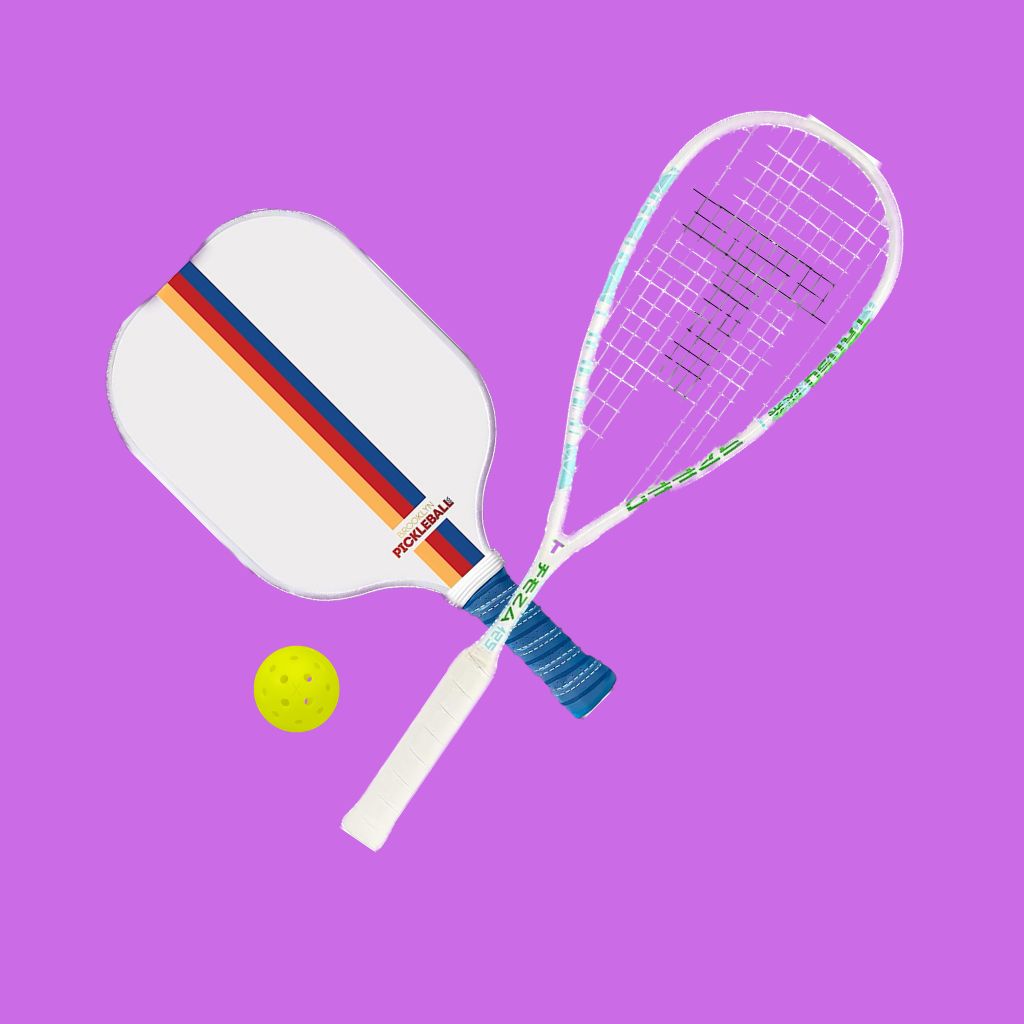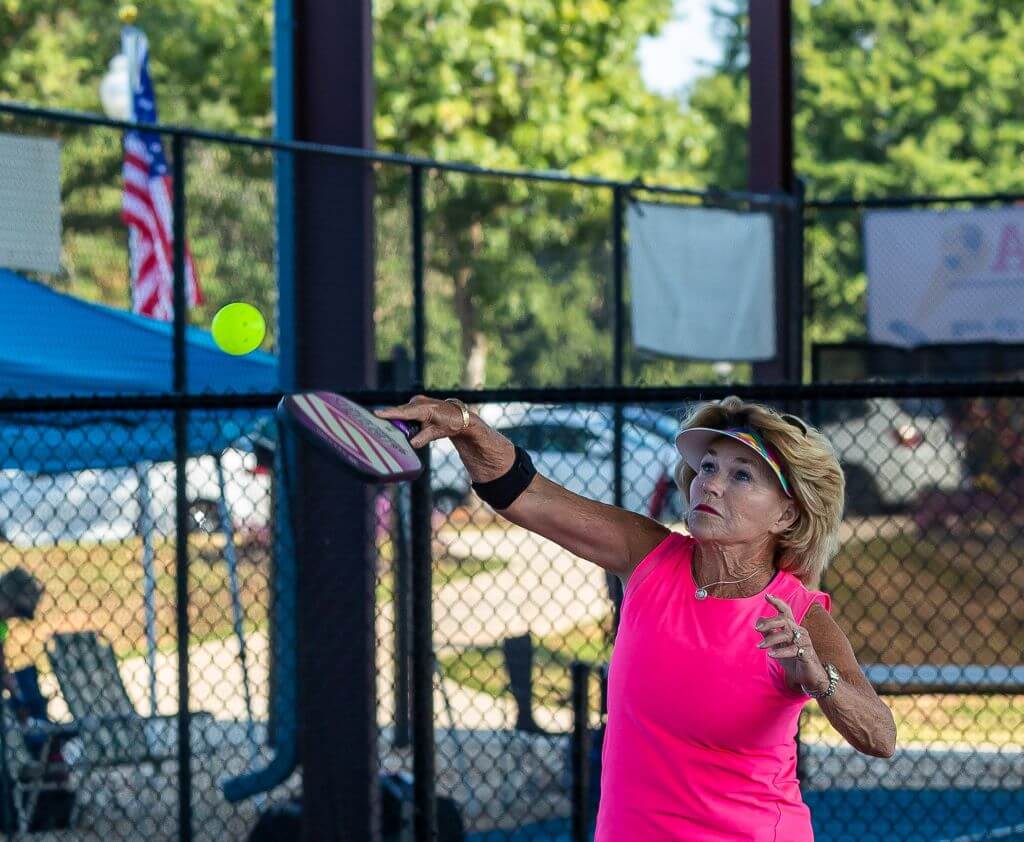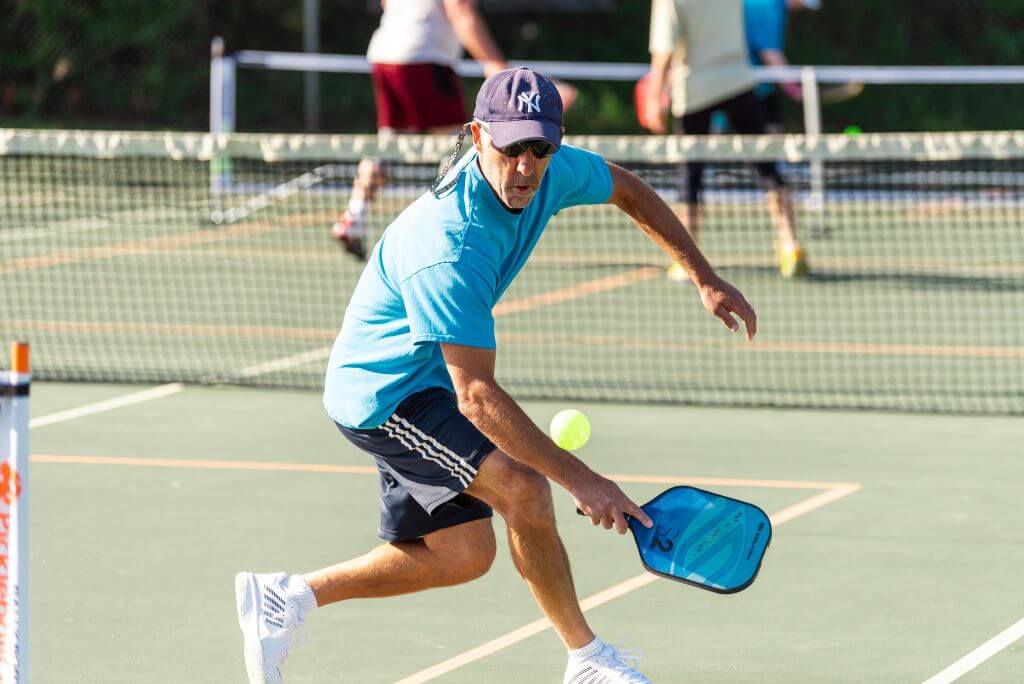Both singles and doubles pickleball players need to know how pickleball is scored and which pickleball rules are most crucial for scoring… especially since singles and doubles pickleball are played with different scoring systems.
So, let us find out how to keep score in pickleball—starting from the basics of scoring points, pickleball scoring rules, and how scoring works.
The Basics
In a pickleball match, points are only earned by the player that is currently serving.
This means that whenever the server (player A) lands a hit, they immediately score a point. They may continue to score until they commit a foul, which ends the rally. The other player (player B) doesn’t receive a point when this happens, but they do become the new server. As the new server, player B can now begin to score points.
This is applicable to both singles and doubles pickleball. The majority of pickleball matches lead to 11 points (win by 2), while some matches in tournaments may go up to 15 or 21 points.
What Scores Mean in Doubles Pickleball
The scoring in doubles pickleball comprises three numbers, for example 0-0-2. Here’s what each number means:
- The first number is the serving team’s score.
- The second number is the receiving team’s score.
- The third number is the server number, which can be either server 1 or server 2.
So, a score of 10-8-2 would indicate that the serving side has 10 points, the receiving team has 8 points, and the serving team’s second server is the server for that round.
What Scores Mean in Singles Pickleball
The score in singles pickleball is easier to keep track of. It consists of just two numbers, like 0-0.
- The first number is the server’s score.
- The second number is the receiver’s score.
So, a score of 10-8 means that the server has 10 points, while the receiver has 8 points.
NOTE: Serves are always done on the right side of the court if the serving team’s score is an even number. Conversely, serves are always done on the left side of the court if the serving team’s score is an odd number.
How Do You Score Points in Pickleball Doubles?
Now you know what the numbers mean in singles and doubles pickleball scores. But, how exactly do you score points in pickleball? You know that you can only score points if you are on the serving side.
This is pretty straightforward for singles pickleball. The server has a chance to score points as long as he can continue to serve. The moment he commits a fault, the service transfers to the opposing player, who then has the opportunity to score points for himself.
But doubles pickleball is slightly more complicated than that. Who gets to serve first on the serving team is determined by choice, or a predetermined method like a coin flip. If the first server loses the point, the service passes on to their partner. This allows both players on the serving team to serve and score points until they commit a fault, promoting fairness and balance in the game.
Let’s go into detail about how pickleball doubles services are done, and how points are scored so you can better imagine the scenario. It helps if you watch a doubles game and keep these points in mind while doing so.
- Each team in doubles pickleball has a chance to serve twice—one for each partner. So, if they lose the rally once, the service transfers from server 1 to server 2.
- The starting score is therefore 0-0-1, which means 0 points for the serving team, 0 points for the receiving team, and server 1’s turn to serve.
- If the serving team commits a fault immediately, the score becomes 0-0-2, which means 0 points for both teams, and indicates server 2’s turn to serve.
- If the serving team commits another fault, the receiving team becomes the new serving team in the next round.
- Server 1 of the new serving team starts the game with a service. If they are able to land a solid shot during this time, they get a point.
- The score will now be 1-0-1, indicating a point for a serving team, no points for the receiving team, and the next serve to be done by server 1 still.
- Since the serving team’s score is now an odd number, servers 1 and 2 will have to switch sides so that server 1 can serve on the left side of the court.
- Only the serving team will switch places after scoring a point, not the receiving team.
- The match will go on until either the serving team scores 11 points, or until they commit two faults—during server 1’s service rally and during server 2’s service rally.
- Let’s say the service team was able to score four points during their turn. At the end of their turn, the score will be 4-0-2 (4 points for the serving team, none for the receiving team, and 2 indicating server 2 was the last to serve).
- The service will then go back to the first team. The score called will be 0-4-1 (0 points for the serving team, 4 points for the receiving team, server 1’s turn to serve).
Complicated? You bet. But you have to know these rules as they are stated in the official pickleball guidelines. You need to keep track of the scores during a game.
Remember that where you do your serve will depend on whether your score is an even or an odd number. If you stand on the left side of the court, despite having an even score, you will commit a service fault and lose the rally. This is a common mistake made by beginners or players who aren’t that familiar with pickleball yet.
Calling the Score in Pickleball
The score should only be announced when both the serving and receiving players are ready to play and are in their correct positions. By calling out the score, players can prompt their opponents to get into the right position and maintain a fair and efficient pace of the game.
Additionally, if a server or receiver is causing a delay or slowing down the pace of the game, the opposing player or team has the option to call out the current score to help encourage a timely continuation of the match. This practice helps maintain the flow of the game and ensures that players are focused and prepared to engage in the next rally.
Correcting a Wrong Score Call
According to rule 4.K. of the 2023 Official Rulebook for USA Pickleball, if the wrong score is called by the server or the referee, any player on the pickleball court has the authority to stop play and request for the correct score to be recalled before the return of serve is executed.
However, if a player stops play to challenge the score, but it is later found that no error was committed, it’s considered a fault.
Also, if a player stops play after the return of serve, they commit a fault and will lose the rally.
Getting the Pickleball Score from the Referee
On the pickleball court or the service court, the serving teams or player serving may ask the following questions to the referee. But it should be before the server serves.
- Are we in the correct position?
- Who is the correct server?
- What are the score points?
- What is the current score?
The receiving team may ask the following questions before the serve:
- Are we in the correct position?
- Who is the correct receiver?
- What is the correct score?
- What is the receiver score?
Takeaway
If you managed to read through this whole guide, you must be exhausted! Keeping score in pickleball is no joke. But it’s a necessary evil if you want to avoid faults and penalties. Let us quickly list the rules once again.
- At the start of each doubles pickleball game, only one partner on the serving team gets the chance to serve before faulting. The next partner gets to serve if their team commits a fault.
- The team can decide who gets to serve first, or they can do a coin toss to determine.
- Servers need to stand on the right side of the court if their score is even, and on the left side if their score is odd.
- The person or team who wins two out of three games to 11 points (win by 2 points) wins the match.
- Before each serve in doubles, the score is called out in three numbers: the score of the serving team, the score of the receiving team, and the server number.
- Before each serve in singles, the score is called out in two numbers: the server’s score and the receiver’s score.
Now that you know the pickleball scoring rules and how to call scores in pickleball, learn how to win points by mastering these doubles pickleball strategies.

